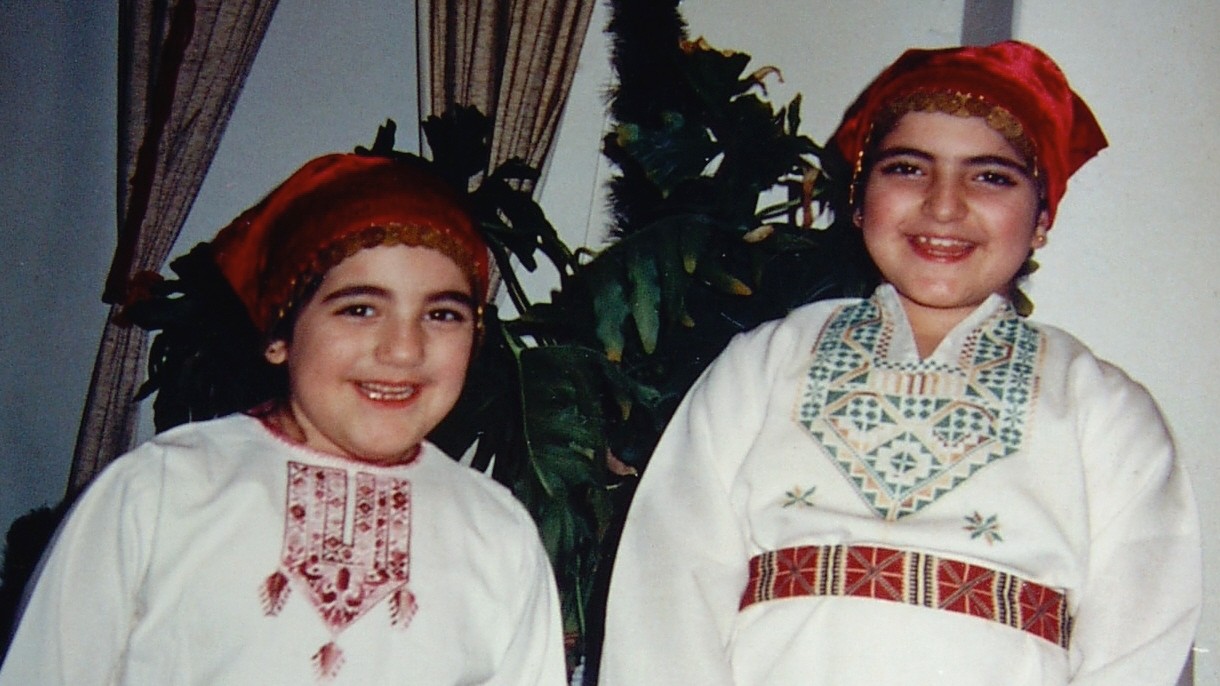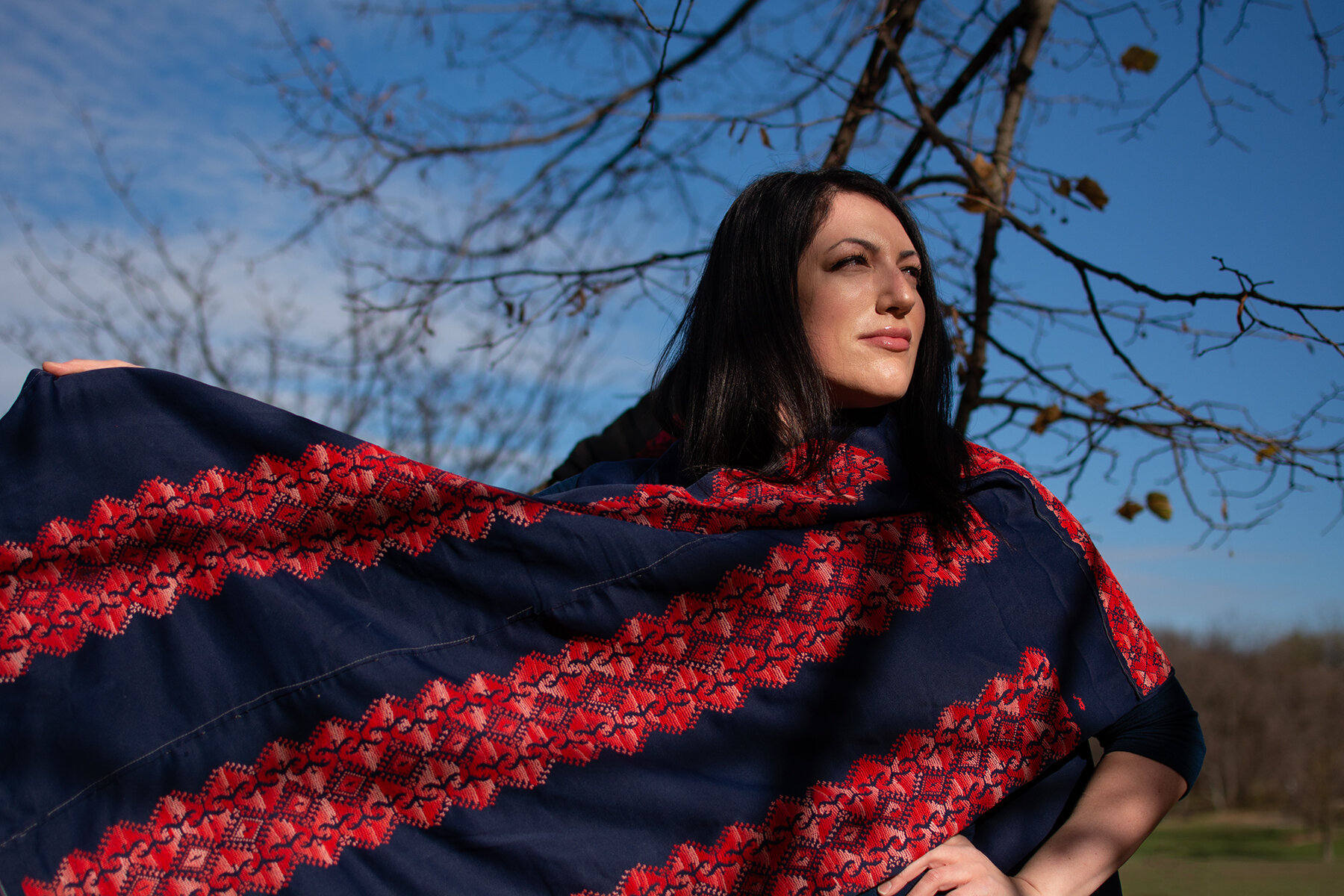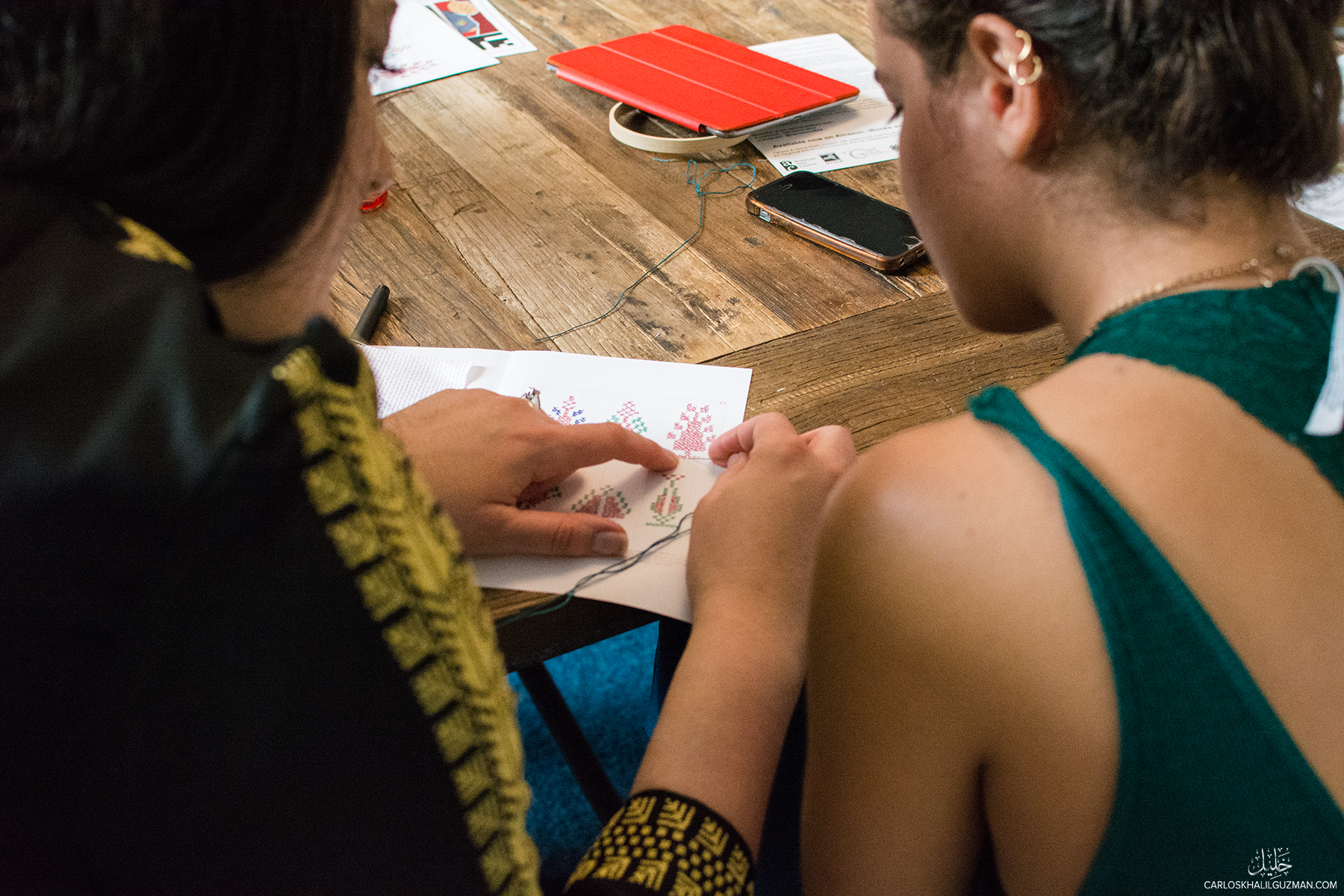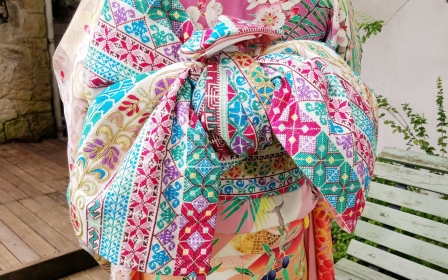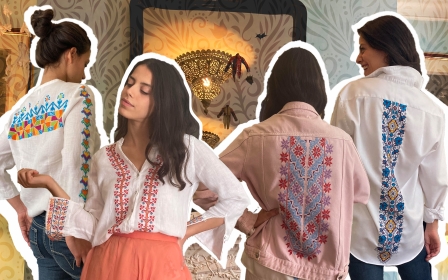The Palestinian woman hoping to preserve tatreez embroidery for future generations

Wafa Ghnaim’s mother was forced into exile from her home in Safad in historic Palestine at the age of three. To keep the ties with her home region alive, she taught herself the art of tatreez, a form of folk embroidery popular among women in rural Palestinian villages.
As a young girl, Ghnaim spent hours trailing after her mother, watching her hands as they meticulously stitched coloured threads, fascinated by the motions.
Like many tens of thousands of others, Ghnaim’s parents were forced to leave behind all of their possessions, including their finest clothes and personal belongings, during the Nakba of 1948 (Arabic for "catastrophe").
Sparked by her mother's handiwork, as she grew older Ghnaim became more interested in tatreez and how it kept her connected to her ancestral home in what is now Israel.
Initially she chose to study business, but over time her interest dulled and she decided to pursue the study of tatreez full time.
New MEE newsletter: Jerusalem Dispatch
Sign up to get the latest insights and analysis on Israel-Palestine, alongside Turkey Unpacked and other MEE newsletters
“I saw a lot of Palestinian embroidery books that didn’t really talk about the meanings behind tatreez and the different motifs, but my mum always described the different symbols and patterns and would explain them through stories,” she told Middle East Eye.
Ghnaim has since authored a book, Tatreez and Tea: Embroidery and Storytelling in the Palestinian Diaspora. As a researcher, she works on identifying different tatreez styles and gathering as much information as possible about them so that they can be preserved for future generations.
The book also describes how Ghnaim learned to embroider from her mother, often while sharing cups of tea and listening to stories passed down over the generations.
Tatreez and Palestinian identity
For Palestinian women, tatreez is a way of documenting history, as well as the life of the person wearing the designs. Designs often include themes and symbols relevant to the Palestinian experience today, such as resistance to Israeli occupation.
A carefully crafted tatreez-embroidered thobe can take months to make and is often bespoke to the wearer's personal story and ancestral origins.
“It represents our ancestry and history, something beyond how Palestinians are characterised today,” Ghnaim says. “I’m an American in the United States, which is a huge supporter of Israel, one of the main funders of the Israeli military, and it can be really hard growing up, because your identity is stigmatised.”
While efforts to preserve the tatreez are widespread and date back decades, over time misinformation about the origins of specific designs has become more common, as have gaps in knowledge about the origins of certain patterns.
“Palestinians have spent their whole lives fighting the erasure of our culture, so how can you blame them for wanting to protect it? I felt like the best way to do that is through education,” Ghnaim says.
She works with a number of museums in the US to help them gather information on garments and identify tatreez styles.
One of Ghnaim's key objectives is ensuring the documentation of such garments is as specific as possible, and they are catalogued correctly. She explains that over the years, many Palestinian garments have ended up in European museum collections which have little information about the objects they are exhibiting.
“In the late and early 20th century, [Europeans and Americans] were visiting Palestine, coming for tourism and Christian pilgrimage. These people were purchasing our traditional clothing and presenting it as their own, taking it back to their home countries,” she says.
Tatreez as ‘resistance’
According to Ghnaim, to be a Palestinian is to be someone who is harassed, stereotyped and ostracised by virtue of their national identity. Holding on to, and amplifying, aspects of Palestinian culture become ways of resisting attacks on Palestinian identity, she explains.
The craft of tatreez shows that there is more to Palestinian life than what is broadcast in news cycles, and Ghnaim believes that highlighting such traditions also helps humanise Palestinians and banish stereotypes that exist around them.
Historically, the popularity of tatreez has been intertwined with key episodes in Palestinian history.
“During the first Intifada in 1987 and 1993, when Palestinians were under curfew, they had to stay at home a lot,” she says. “At that time there was the emergence of the Intifada dress, stitching and embroidery, where people stitched the Palestinian flag into their clothing.”
Some of the motifs sewn onto clothes at the time included the Dome of the Rock, Arabic calligraphy and images of people throwing rocks.
Birds also commonly feature on traditional dress, along with stars and moon symbols.
For Palestinians living in the diaspora, learning the craft can also be a form of defiance, by staying in touch with their homeland and its traditions. Tatreez is also being taken up by non-Palestinians, as a way of showing solidarity with their struggle.
Beyond Palestine
Ghnaim’s extensive research into Palestinian tatreez has inspired her to delve into the other forms of the craft around the Middle East, including in Syria, a country she has a deep connection to. After Ghnaim’s mother was forced to flee in 1948, she spent her early years of exile in Syria, where thousands of Palestinians had been granted refuge.
The Palestinian form of tatreez is distinct from Syrian versions, but they have aspects in common.
“The chest designs on Palestinian dresses are more narrow, and sometimes more square; sometimes they have a triangle underneath. However, in the Syrian Saraqeb style, there’s a triangle that goes into the shoulders and appears on the back also,” she explains.
“Syrian designs also tend to be asymmetrical, so you’ll see a lot of embroidery on one side and almost no embroidery on the other side. Whereas Palestinian embroidery shows a great interest in symmetry and visual balance, as well as harmonious colours.”
Tatreez circles
Ghnaim caters to interest in tatreez both among Palestinians and others on her Instagram page, where she regularly hosts live sessions, teaching her followers how to stitch in different styles.
“Initially, no one was really doing this, but it has since grown a lot. It allowed me to teach people about tatreez and raise awareness, and it kind of grew from there,” she says.
She also runs in-person tatreez workshops in the US, hoping that by teaching others, she will make the craft more popular. Both Palestinians and non-Palestinians attend, eager to find out more about the history of the tradition and what the patterns and motifs mean.
Ghnaim says her workshops have been designed to build on and preserve the work of Palestinian elders.
“I’m still learning about tatreez all the time, and my research is still truly alive and going."
Middle East Eye delivers independent and unrivalled coverage and analysis of the Middle East, North Africa and beyond. To learn more about republishing this content and the associated fees, please fill out this form. More about MEE can be found here.


